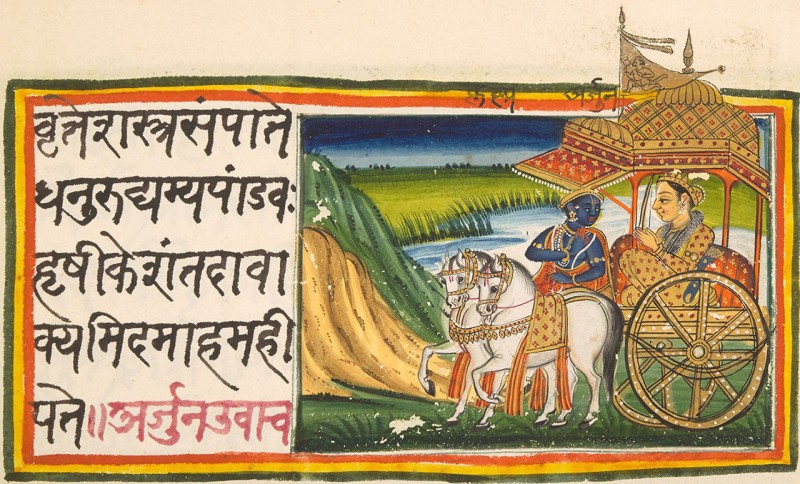
Indian literature is a rich and diverse tapestry that spans centuries. It is a reflection of the country's cultural, social, and historical heritage. Throughout history, Indian literature has evolved and flourished, giving birth to several significant literary periods. In this article, we will explore the major ages of Indian literature, from ancient times to the present day, highlighting their characteristics and notable works.
Ancient Indian Literature:-
Rigvedic Age: The Rigvedic Age, also known as the Vedic period, dates back to around 1500 BCE. It is characterized by the composition of the Rigveda, a collection of sacred hymns written in Vedic Sanskrit. These hymns serve as a valuable source of information about the social, religious, and cultural practices of that era.
Classical Sanskrit Literature: Classical Sanskrit literature emerged between the 2nd century BCE and the 4th century CE. This period witnessed the creation of significant works such as the Mahabharata, Ramayana, and plays by renowned playwrights like Kalidasa. It marked a golden era for Indian literature, with an emphasis on poetry, drama, and philosophical treatises.
Tamil Sangam Literature: Tamil Sangam literature flourished in ancient South India from 300 BCE to 300 CE. It is categorized into two periods, the Early Sangam Age and the Later Sangam Age. This literature comprised of poems and prose, covering various themes like love, war, and ethics. The works of poets such as Thiruvalluvar and Avvaiyar are highly regarded in Tamil literature.
Medieval Indian Literature
Bhakti Movement: The Bhakti movement, which originated in the 7th century, marked a significant shift in Indian literature. It focused on devotional poetry and emphasized a personal connection with the divine. Prominent Bhakti saints like Mirabai, Tulsidas, and Kabir composed verses that expressed intense spiritual devotion.
Sufi Literature: During the medieval period, Sufi literature gained prominence in India. Influenced by Islamic mysticism, Sufi poets like Rumi, Hafiz, and Bulleh Shah blended Persian and Indian traditions to convey spiritual teachings through their poetry. Their works celebrated love, unity, and the search for divine truth.
Persian Influence: The presence of Persian literature in India during the medieval period had a significant impact on Indian literary traditions. Persian works, such as the Persian translation of the Mahabharata by Abul Fazl, brought new storytelling techniques and literary styles to the Indian literary landscape.
Pre-Independence Indian Literature
Colonial Impact on Indian Writing: The colonial rule in India influenced the direction of Indian literature. English became an important medium of expression, and Indian writers began to engage with Western literary forms and themes. Renowned authors like Rabindranath Tagore and Bankim Chandra Chattopadhyay emerged during this period, contributing to the Indian literary canon.
Renaissance and Modernism: The early 20th century witnessed a literary renaissance in India. Influenced by Western modernist movements, writers like Raja Rao and Mulk Raj Anand experimented with narrative styles and explored social and political themes. This period also saw the emergence of literary magazines and forums that fostered creative exchange and intellectual discourse.
Regional Language Literature: While Indian literature in English gained prominence, regional language literature continued to flourish. Writers like Premchand in Hindi, Sarat Chandra Chattopadhyay in Bengali, and Thakazhi Sivasankara Pillai in Malayalam made significant contributions to their respective languages, capturing the essence of regional cultures and experiences.
Post-Independence Indian Literature
Progressive Writers' Movement: Following India's independence in 1947, the Progressive Writers' Movement emerged as a significant literary force. Writers associated with this movement, such as Ismat Chughtai and Saadat Hasan Manto, addressed social and political issues through their works. Their writings focused on themes like gender inequality, communal tensions, and the struggles of marginalized communities.
Indian English Literature: Indian English literature gained global recognition in the latter half of the 20th century. Authors like R.K. Narayan, Arundhati Roy, and Salman Rushdie achieved international acclaim for their evocative storytelling and exploration of India's cultural and social complexities. Indian English literature became a vibrant and influential branch of Indian literature.
Contemporary Indian Literature
Contemporary Indian literature reflects the diversity and dynamism of modern India. Writers from various backgrounds and regions explore a wide range of themes and genres. Works by authors such as Jhumpa Lahiri, Amitav Ghosh, and Arundhati Roy continue to captivate readers worldwide, showcasing the rich tapestry of Indian storytelling.
Conclusion: Indian literature has traversed through multiple ages, each with its unique characteristics and contributions. From the ancient Rigvedic hymns to the vibrant contemporary writings, Indian literature has evolved, drawing inspiration from its cultural and historical roots. It continues to be a powerful medium for capturing the essence of India's diverse society, its struggles, aspirations, and enduring human spirit.
Royal Enfield Unleashes the Adventurer's Dream: The Himalayan 450 Roars with Power and Innovation
Global Oil Demand Outlook Dimmed: Economic Headwinds Cast Shadow on Growth, says IEA
Italian companies want to trade in rubles instead of euros in Russia